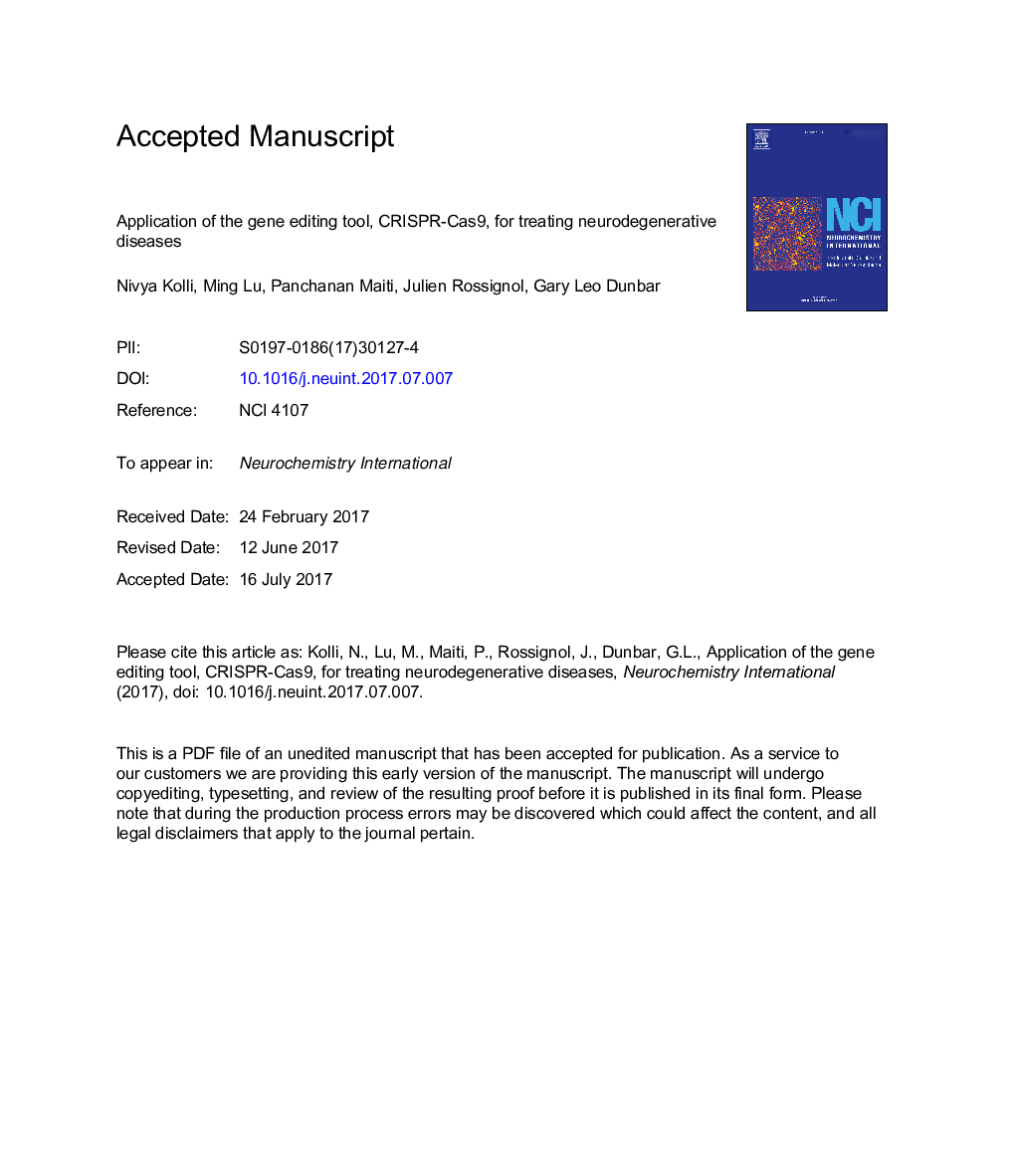| کد مقاله | کد نشریه | سال انتشار | مقاله انگلیسی | نسخه تمام متن |
|---|---|---|---|---|
| 8478986 | 1551263 | 2018 | 36 صفحه PDF | دانلود رایگان |
عنوان انگلیسی مقاله ISI
Application of the gene editing tool, CRISPR-Cas9, for treating neurodegenerative diseases
دانلود مقاله + سفارش ترجمه
دانلود مقاله ISI انگلیسی
رایگان برای ایرانیان
کلمات کلیدی
موضوعات مرتبط
علوم زیستی و بیوفناوری
بیوشیمی، ژنتیک و زیست شناسی مولکولی
بیولوژی سلول
پیش نمایش صفحه اول مقاله

چکیده انگلیسی
Increased accumulation of transcribed protein from the damaged DNA and reduced DNA repair capability contributes to numerous neurological diseases for which effective treatments are lacking. Gene editing techniques provide new hope for replacing defective genes and DNA associated with neurological diseases. With advancements in using such editing tools as zinc finger nucleases (ZFNs), meganucleases, and transcription activator-like effector nucleases (TALENs), etc., scientists are able to design DNA-binding proteins, which can make precise double-strand breaks (DSBs) at the target DNA. Recent developments with the CRISPR-Cas9 gene-editing technology has proven to be more precise and efficient when compared to most other gene-editing techniques. Two methods, non-homologous end joining (NHEJ) and homology-direct repair (HDR), are used in CRISPR-Cas9 system to efficiently excise the defective genes and incorporate exogenous DNA at the target site. In this review article, we provide an overview of the CRISPR-Cas9 methodology, including its molecular mechanism, with a focus on how in this gene-editing tool can be used to counteract certain genetic defects associated with neurological diseases. Detailed understanding of this new tool could help researchers design specific gene editing strategies to repair genetic disorders in selective neurological diseases.
ناشر
Database: Elsevier - ScienceDirect (ساینس دایرکت)
Journal: Neurochemistry International - Volume 112, January 2018, Pages 187-196
Journal: Neurochemistry International - Volume 112, January 2018, Pages 187-196
نویسندگان
Nivya Kolli, Ming Lu, Panchanan Maiti, Julien Rossignol, Gary L. Dunbar,